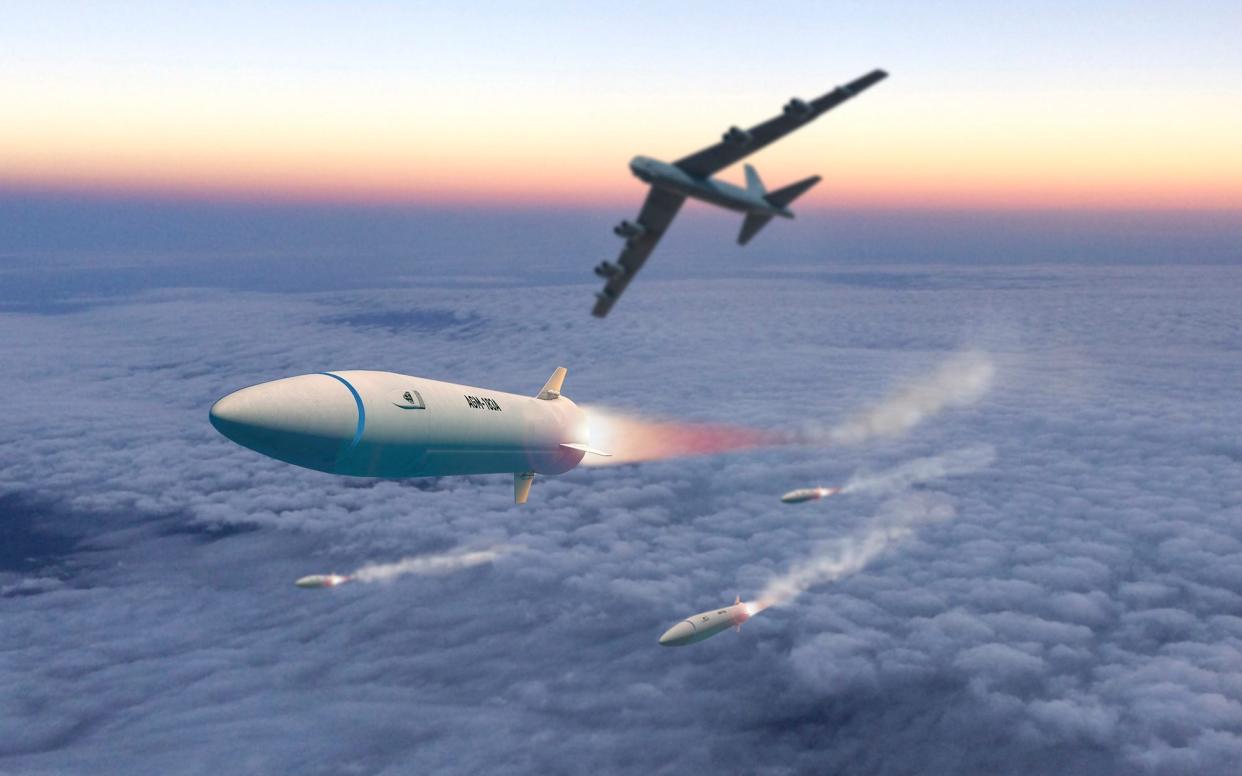Britain to deploy homegrown hypersonic missile by 2030

Britain plans to equip the Armed Forces with a homegrown hypersonic cruise missile by the end of the decade, The Telegraph has learnt.
Military chiefs want a weapon capable of reaching speeds exceeding Mach 5 as the Government races to catch up with China, Russia and the US.
The Ministry of Defence (MoD) has insisted that the new weapon be designed and built entirely in Britain and is understood to have set a deadline of 2030 for it to enter service.
The project has been identified by Prime Minister Rishi Sunak, as one destination for a planned £75 billion uplift in the defence budget over the next six years.
A government defence source said: “Cutting-edge projects like this are only possible because of the massive new investment the Government has made this week in defence innovation.
“With Labour refusing to match our investment, continuing this project would be impossible under Keir Starmer – the military would be forced to cut the hypersonic programme, in a move that would make Putin’s dreams come true.”
The missile plans are understood still to be at an early stage, with no decision taken so far on whether it would be launched from land, sea or air.
One option is a weapon that could be fitted to a fighter jet like the Typhoon or F-35, which would have a shorter range and smaller payload than a larger weapon launched from the ground. The missile could also be launched from one of the UK’s warships.
The project is being managed directly by MoD headquarters in Whitehall, rather than by one of the three armed services.
Since late last year, the MoD has been running a consortium of around 80 companies to come up with possible designs.
The Hypersonic Technologies & Capability Development Framework Agreement was launched in December in what has been described as a “national mission”.
Sources involved in the project said the construction of the missiles would be especially difficult because some of the materials required do not yet exist, and must be developed from scratch to withstand the high temperatures that come with hypersonic speeds.
Engineers are also working on a British version of a “scramjet” engine, which uses compressed air moving at supersonic speeds to aid the combustion of liquid or solid fuel.
The MoD declined to comment in detail on the plans, citing national security concerns, but a spokesman said: “We are pursuing hypersonic technologies to further develop UK sovereign advanced capabilities. We continue to invest in our equipment to meet current and future threats.”
Most missile projects work as international collaborations between the UK and at least one foreign ally, making the hypersonic cruise missile project unusual.
A separate project could see the UK acquire an even faster and more sophisticated type of hypersonic weapon, known as a glide vehicle, through the AUKUS partnership with the United States and Australia.
Hypersonic missiles, which operate at significantly faster speeds than standard cruise missiles, have the ability to evade an opponent’s air defences by travelling at more than 4,000 miles per hour and manoeuvring in mid-flight.
The US has already successfully tested a hypersonic cruise missile, which it says is vital to keep pace with missile technology in Russia and China, which both claim to have developed similar technology.
Joe Biden, the US president, has described Russian hypersonic missiles launched at Ukrainian cities as being “almost impossible to stop”.
The US has several hypersonic missile programmes. They have suffered months of delays and failures, but a recent test flight over the Pacific Ocean was a success, and Washington hopes to have its first hypersonic weapons in service as early as next year.
Earlier this month, North Korea claimed it had successfully tested a new hypersonic missile that could evade South Korean and US air defences, but this claim has been described as “greatly exaggerated”.
China goes hypersonic
China has developed land, sea and air-based hypersonic weapons, including the DF-ZF glide vehicle that entered service in 2018 and is said to be capable of speeds approaching Mach 10.
At that speed, a missile with a long enough range could travel the circumference of the Earth in just over three hours.
Western experts have cast doubt on claims by Russia and North Korea to have produced a true hypersonic missile, with Moscow’s Kinzhal claim to the title dubbed “at best questionable”.
Ballistic missiles, including the Trident system used in British and US nuclear submarines, can already travel at speeds of over Mach 20, but are easier to shoot down because they travel on a predictable trajectory.
The UK is prepared to invest up to £1 billion in its hypersonic project through the defence consortium in the next seven years, although sources said missiles could be purchased from the US if a future defence review found they were needed sooner.
The competition over hypersonics, which has been compared to the start of the Cold War arms race in the 1950s, has prompted debate over whether the missiles are worth their high price tag.
James Black, the assistant director of defence research at Rand Europe, a think tank, said that while the missiles offered “some military benefits”, the money may be better spent on existing technology.
“High cost and enduring challenges to technical feasibility mean that such weapons, if and when they become available to the UK armed forces, are likely to only be available in very small numbers,” he said.
“This raises questions about whether the UK would be better off increasing its stockpiles of cheaper precision weapons and other munitions rather than purchasing too many ‘exquisite’ hypersonic weapons that may be overkill for most targets.”
Once the UK has developed its own hypersonic weapon, it will be shared with the US and Australia in exchange for collaboration on other projects, including AI, quantum technology, hypersonics and undersea drones.


